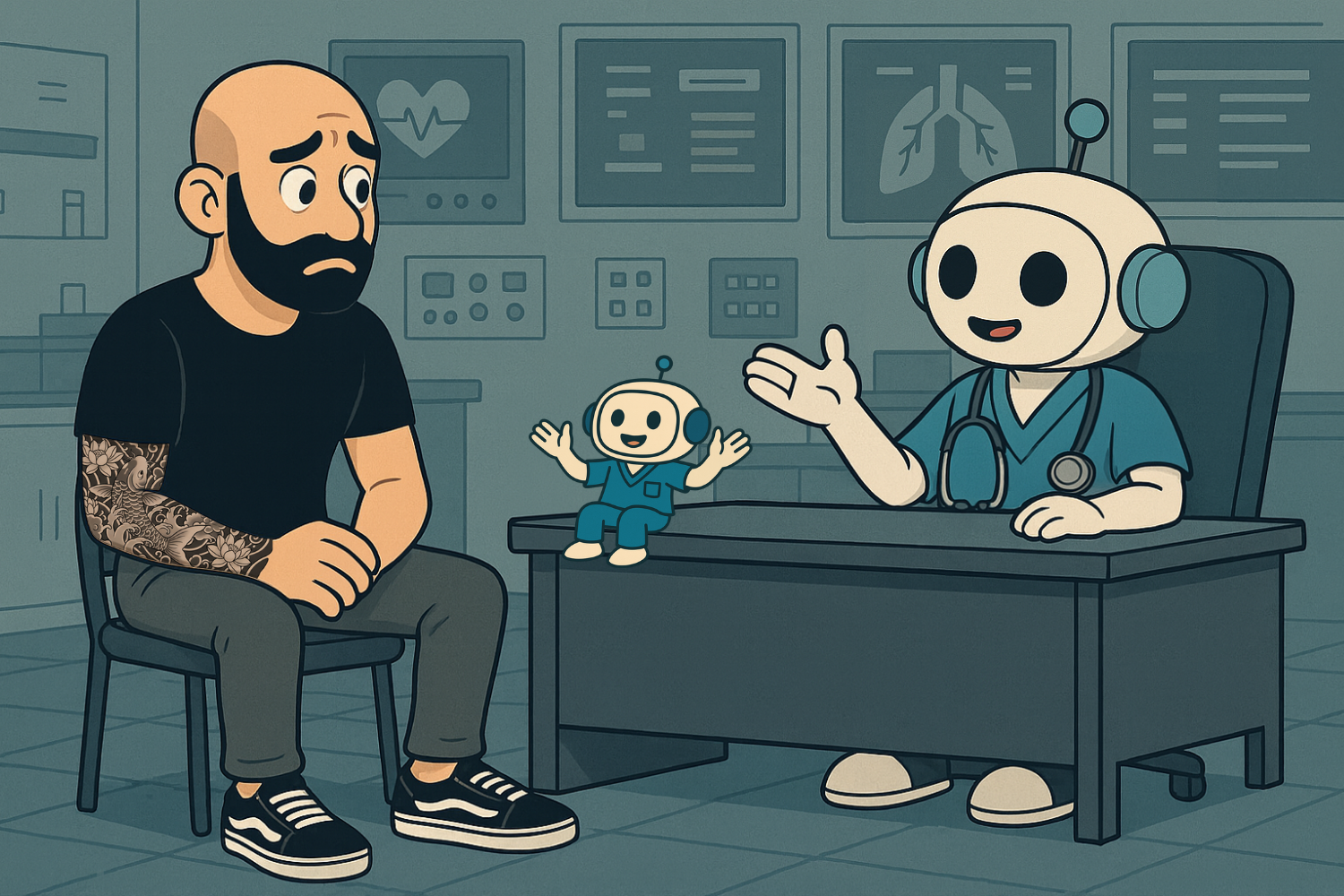When AI Becomes Your Wellness Coach: How Data-Driven Health Is Already Changing Lives
This week, I delivered the keynote for The Future of AI in Healthcare, exploring how emerging models, predictive analytics, and AI-assisted gene editing are reshaping medicine. But the topic that resonated most wasn’t futuristic, it was my own hands-on experiments using AI wellness tools available to anyone today.
Because nothing makes the future of AI real like watching it save you from yourself. Or, more accuratley, our current healthcare system.
The future is now
AI in healthcare is finally shifting from theory to practice. But the lesson I learned firsthand is that the impact of AI isn’t only in what it can analyze, it’s in what it helps you act on.
When I couldn’t get prevention-first guidance from the system, I decided to build my own AI “wellness coach.” I gave it everything: a decade of lab results, five years of wearable data, my supplement list, prescription history, and even various sets of gym equipment inventory so it could design custom workouts when I was home or on the road. I asked it to analyze patterns, spot risks, and build daily recommendations.
A few weeks later, it flagged something I never would have noticed. My respiratory rate and oxygen saturation levels were off. It told me to get a sleep study. This was something a physician has never recommended because it is usually triggered by lifestyle and/or BMI factors. I did the home sleep study that it recommended, and discovered moderate sleep apnea. It was actually kind of scary. My wearable data always skewed on the low side for blood oxygen saturation. However, these were just nightly averages. The sleep study showed those levels dipping below 85% which is very dangerous.
It also pointed out that the statin my doctor prescribed was blocking the same pathway my body needed to make testosterone, explaining why my levels had dropped by a third.
The model recommended switching to a different cholesterol medication, adjusting my metformin, and adding a few specific supplements. I followed its plan for twelve weeks. The results: ApoB down 34%, LDL down 40%, non-HDL down 65%, A1c down 11%, and testosterone more than doubled. My average oxygen levels during sleep went up by 5%.
It takes 6-8 weeks to get in and see my primary care physician. I then get about 15 minutes of time with zero interest in reviewing data I've collected, and the story it might be telling. When it comes to better healthcare outcomes, access, data, and quick pivots can make a huge difference.
Where the future is going
Most AI-for-healthcare talk still lives in slide decks. But the practical gains are here and they’re measurable. AI is already simplifying discharge instructions from an 11th-grade reading level down to 6th, helping patients actually understand what to do when they leave the hospital. Oncology trials are getting smarter and faster, with AI helping identify effective drug combinations earlier. Predictive models are flagging chronic obstructive pulmonary disease (COPD) flare-ups before they happen. Voice assistants are helping patients titrate insulin safely in weeks instead of months.
And that’s just healthcare.
The same patterns are playing out everywhere. In HR, AI is being used to personalize employee coaching and automate feedback. In operations, it’s predicting supply issues before they happen. In marketing, it’s finding overlooked audiences and tailoring outreach at scale. Anywhere data is fragmented and human judgment is stretched, AI is becoming a second set of eyes, and often a faster one.
Actionable insights: a 90-day operating plan
Healthcare has an additional set of AI implementation hurdles when it comes to guidelines and regulations to implement. But they are still confronted with the same opening question: What do we do in the first three months? Here's where to start.
1) Build literacy before tools
Before buying or integrating anything, help your team understand what AI is good at and where it fails. In healthcare, this might mean helping clinicians learn how to verify outputs. In other industries, it could mean training managers to spot bias or misuse before it becomes a problem.
2) Pick three testable use cases
Choose one high-value problem in each area of your business. In healthcare, maybe that’s patient education, documentation, or early detection. In finance, it could be fraud spotting or portfolio analysis. In marketing, customer segmentation or content creation. The point isn’t size, it’s speed of feedback.
3) Build lightweight governance
Instead of complex compliance frameworks, start with something simple: Who’s accountable for reviewing AI outputs? How do you measure risk versus value? For healthcare, that might include clinical oversight. For other industries, it’s usually data privacy and brand safety.
4) Close the gaps early
Don’t assume regulation won’t catch up. Healthcare is already seeing new transparency and disclosure rules for algorithms, and that same trend is coming everywhere, from advertising to HR tech. If your data is sensitive or personalized, act now: document how it’s used, stored, and shared.
5) Partner smartly
For hospitals, that might mean pairing internal clinical teams with external AI developers. For other sectors, it might mean layering AI capabilities onto your existing tech stack through trusted vendors. Either way, move fast, but don’t move blind.
Humans lead, AI amplifies
The big takeaway from my keynote and my experiment is that AI doesn’t replace experts. It amplifies them. It turns judgment and experience into repeatable systems with more access and less friction on the path to better outcomes.
The leaders who win the next decade won’t be the ones who adopt AI first. They’ll be the ones who combine human insight with machine precision and make decisions faster because of it.
Find your next edge,
Eli
Want help applying this to your product or strategy? We’re ready when you are → Let's get started.

